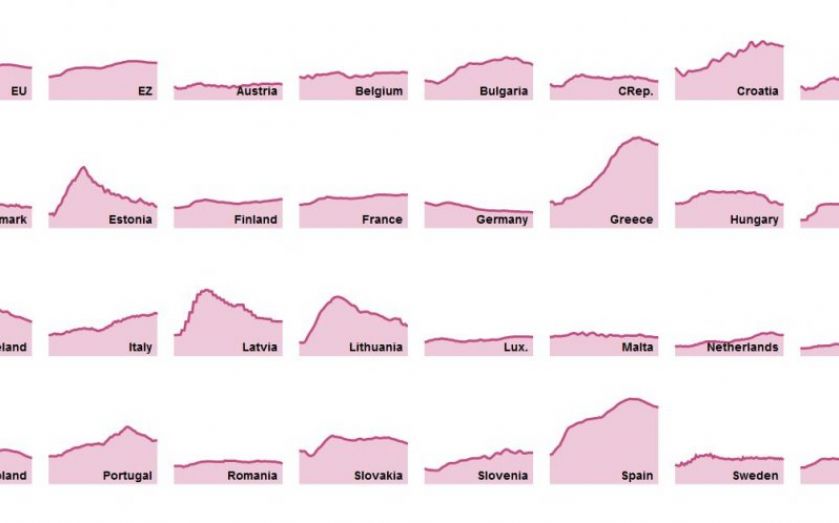32 charts showing every unemployment rate in every Eurozone economy

The Eurozone has finally had some good news: unemployment is down to 11.4 per cent, its lowest rate since August 2012. Although admittedly, 11.4 per cent would cause a mutiny in the UK.
The figure’s drop was relatively small: it was 11.5 per cent in November and 11.8 per cent in December. And chipping fractions of a percentage point from the headline rate (seasonally adjusted) is less impressive if you’re Greece or Spain, which are both still suffering rates in the high 20s.
Still, the headline rate has fallen 1.5 percentage points from its peak: 12 per cent between February and September 2013.
Here’s how it looks across the Eurozone*:
